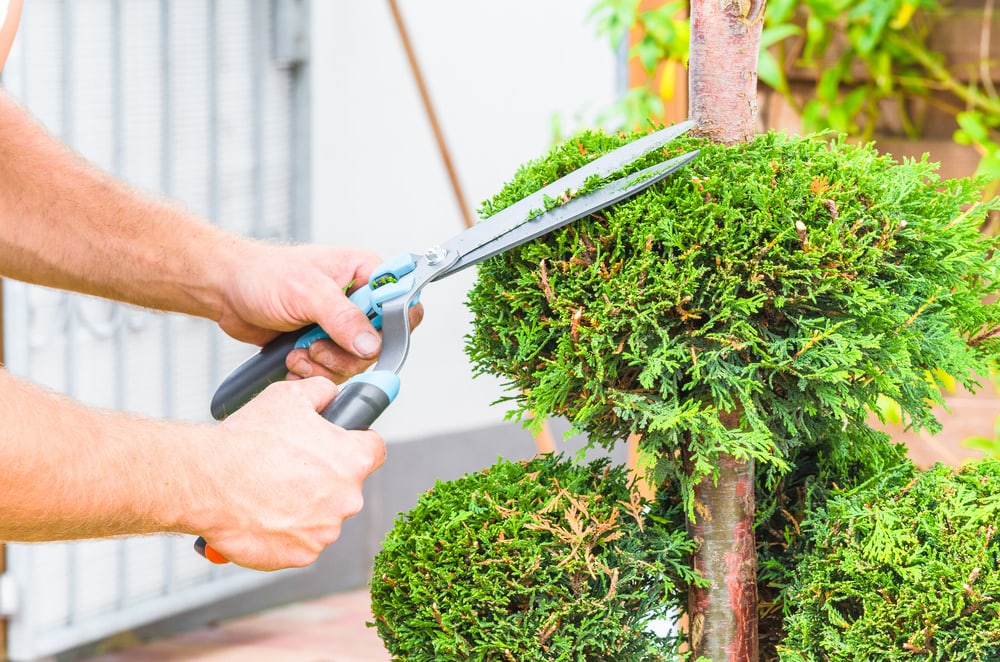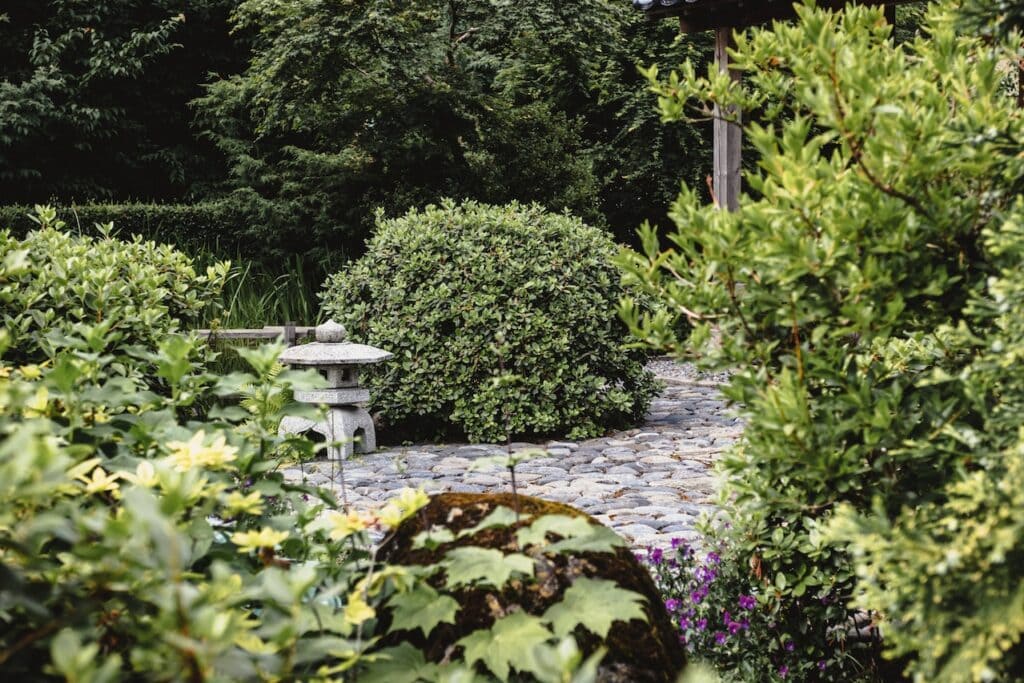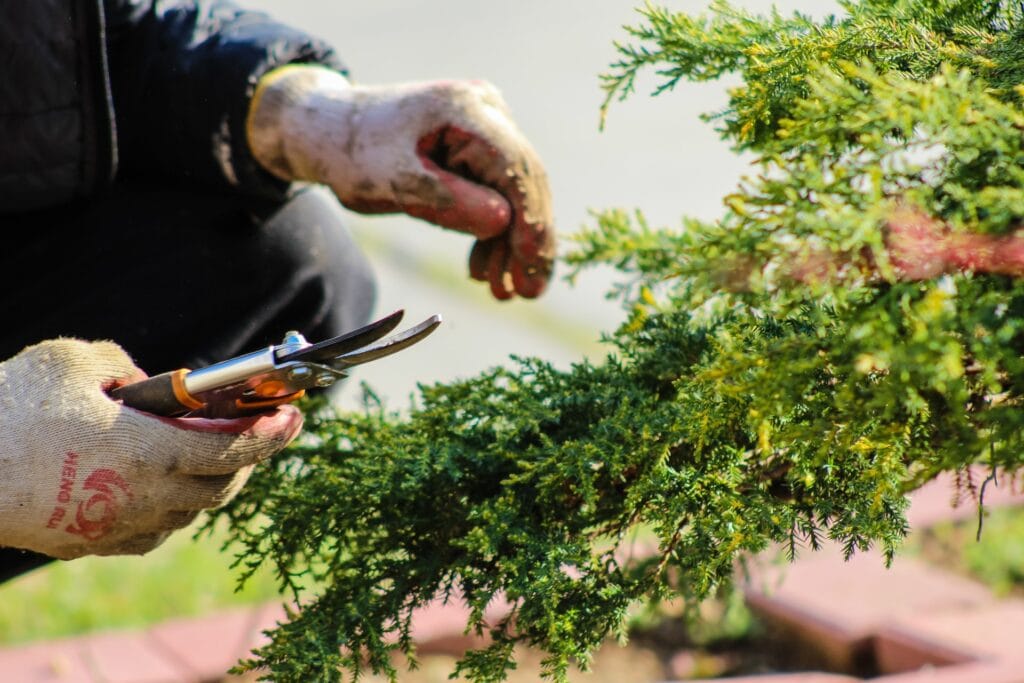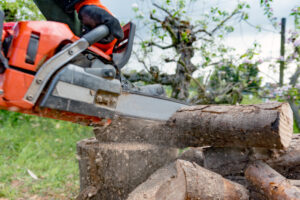Your landscape maintenance plan for the year 2023 should include a significant amount of time dedicated to pruning and trimming your hedges. These techniques are essential to the appearance and health of your soft scapes and should always be addressed. In addition, your hedges and other flora will proliferate uncontrollably with regular trimming and pruning, and their quality may improve as a result.
Following proper pruning and trimming procedures is crucial to promote the health and appearance of the hedges and shrubs in your environment. As we get closer to the end of January, now is the ideal time to educate yourself on the best methods for pruning your hedges, trees, shrubs, and other plants. We'll give you four essential pointers for pruning and trimming your hedges each year.
This tutorial will instruct you how to cut a hedge effectively, regardless of whether you have recently planted a hedge in your garden or inherited one from a previous owner.
Ignore the concerns that trimming a hedge will result in a stressful full weekend of activities. It is possible to accomplish this using something other than the appropriate method and tools. It is important to take care of hedges because they create a natural barrier for our gardens that is both gentle and helps give the garden a sense of seclusion while also adding foliage.
These following tips make your garden unique and beautiful:
- It would be best if you never cut more of your hedges than is necessary.
When trimming your hedges, you should only do what is absolutely necessary. Your shrubs and hedges will be able to attain optimal growth and an attractive appearance if you tend to them in this manner.
Some untrained landscapers will merely hack away at your shrubs without considering the long-term maintenance required. However, you can do your best to look after the well-being of your bushes, hedges, and other types of vegetation throughout the entire year.
2. Some pieces of the property need more trimming than others.
You may require a different frequency of pruning than your neighbours do, depending on the softscape of your land. On the other hand, you can undertake pruning every other week at high-maintenance properties.
You should be familiar with the appropriate trimming schedule for your property's hedges, shrubs, and other landscaping plants.
3. When performed in the winter, pruning is at its most efficient.
When landscaping plants are dormant in winter, it is the best time to prune them. More specifically, you should prune your plants near the end of winter and into the beginning of spring. If you have your hedges and other plants pruned when they are in their dormant phase, you will give them a major advantage regarding their growth in the summer and spring.
Generally, you should adhere to the principles but make exceptions for sites with particular landscaping elements. For instance, you should prune trees that bear fruit between the months of February and April. Additionally, we wait to cut early spring-blooming shrubs until immediately after their flowers have fallen off.
In the first few years following planting, new hedges require "formative trimming," which might occur in winter or early spring.
After that, your hedges will need to be trimmed for upkeep at least once per year for informal hedges and at least twice per year for formal hedges if you want them to seem seamless and uniform. Depending on the plant species and how quickly it grows, certain types of formal hedges can even need to be trimmed 3 times a year.
The optimal time to perform maintenance pruning on a hedge is usually between the spring and summer months. If, on the other hand, birds build their nests in your hedges, you will need to postpone your trimming so that the birds have time to nurture their young.
4. The form of your hedge is of the utmost importance.
The form that your hedge takes is an essential factor in determining your hedgerow's overall health. For example, in formal gardens, you could come across a topiary hedge that has been pruned into a perfect square shape. On the other hand, in practice, most gardens do not have sufficient open space to accept such a perfect square finish with the required sunlight for a healthy hedge of this type.
It would be advantageous to camber the curve of your hedge so that it is slightly narrower at the peak than it is at the bottom, particularly for more substantial hedges.
Cambering a hedge: the steps involved
If you do not even give your hedge a "batter," the lower portion of the hedge will eventually get less light and will have difficulty thriving. Therefore, you will wind up with a lot of thick growth at the top of your hedge, but the hedge will be thin and flimsy towards the bottom. However, it also has an additional benefit: a camber- or batter-topped hedge is less likely to be damaged by snowfall than a hedge with a square-topped top.
There is a good probability that the weight of the snow will break and destroy the margins of the branches along your hedge if it continues to sit and build up on the highest point of the hedge.
A batter or camber is a type of surface that lets snow slide off more easily before accumulating.
5. Rebuild and reshape an outdated and out-of-shape hedge.
You may have relocated recently and discovered that your new home comes with an overgrown or very old hedge. Naturally, the first notion that came to me was to get rid of it and begin afresh from scratch. If you have the necessary patience, you may give an old hedge a new lease of life in a relatively short amount of time. But unfortunately, removing existing hedges and beginning the process from scratch is more expensive and significantly more labour-intensive.
It would be best if you trimmed the hedge down to a height of about 2 feet to stimulate new growth at the base of the hedge and the new 'top' of the hedge. Although this may sound cruel, it is necessary. This is, undoubtedly, only the most effective method for giving an aging hedge a new lease on life.
First, chop through the current hedge in pieces using a chainsaw until you reach the mark indicating 2 feet. After that, all that needs to be done is wait to see the new vegetation emerge and then trim the hedge two times a year as if it were a whole new hedge altogether.
After a period of 3 weeks, there is new growth visible on this Privet and Hawthorn hedge that was recently restored. Believe me when I say that I've tried this on some truly horrible hedges, and with some time and tender loving care, they've all bounced back.
6. Make sure you use the appropriate method of trimming.
Handheld shears are suitable for trimming smaller hedges, but for larger hedges, you will find that using an electric or gasoline-powered hedge trimmer is more convenient. Always ensure the tools you're using are sharp and well-lubricated, no matter what you're working with.
When operating a powerful hedge trimmer, your safety should always be your top priority. Put on safety goggles and gloves made of durable material. It is important to clear the ground of any obstructions before beginning. When working over shoulder height, you should avoid using powered tools and instead make use of solid step ladders or platforms, ensuring that they are stable. Electric hedge clippers work best when used in conjunction with a residual current device, often known as an RCD, and should never be used in wet environments. Placing the cable over your shoulder will protect it in the event that it is snipped by accident. Additional safety recommendations can be found in our guidance for using electricity in the garden.

Formal hedging
There is no necessity for there to have an even width. Plant stems are said to be vigorous when they are healthy and actively growing, particularly when new growth is being produced.
If maintained properly, vigorous hedges can reach heights of more than 60 centimetres (2 feet). Formal hedges should have a modest taper on both sides, meaning that the base should be broader than the top and that light should be able to reach all the way to the bottom. The process of cutting the hedge into a batter has several names.
If you want an even and symmetrical hedge, be sure to follow these tips:
- Cutting straight, precise edges can be challenging by using only your eyes. For cutting the peak of the hedge level, you can use a tight horizontal rope that is strung between two sturdy canes. When drawing vertical lines, canes or stakes that have been driven into the ground are helpful.
- Cut a form of the desired shape out of cardboard or plywood and use it as a guide while shaping the apex of the hedge into a specific form, such as an arch. Put the template on top of the hedge, and then cut down the line that is drawn on the template while moving it along as you work.
- When trimming a hedge using shears, it is important to keep the blades of the shears level to the course of the hedge in order to get a level and flat cut at the top of the hedge.
- When trimming a hedge using a hedge trimmer, position the blade so that it is perpendicular to the hedge. Next, using a wide, sweeping motion, work your way up from the bottom so that the chopped leaves can fall away.
Informal hedging
The process of trimming an informal hedge is very similar to the process of pruning typical bushes. Please refer to the websites provided below for more detailed information on how to prune shrubs;
- Shrubs: trimming evergreens
- Pruning shrubs to encourage summer blossoming
- Prune shrubs to encourage early blossoming.
When trimming informal plants, remove any sprouts that are in the wrong position and trim the hedge so that it is the appropriate height. To prevent unattractive leaf damage, cut the hedge with secateurs or loppers whenever it is possible to do so, particularly if the evergreen hedge has enormous leaves.
7. Determine which pieces of machinery will work best for you to trim your hedges.
Instructions for using electric clippers to prune a hedge
Step 1: Before beginning, check that you are wearing all of the required protective gear.
When trimming hedges with power supplies, it is critical to wear protective gear at all times, including gloves, goggles, and boots. In addition to this, you need to make sure that all of your tools are spotless, fully charged (if they run on batteries), and in good working condition.
Step 2: Begin your work at the base of your hedge and move your way up.
To trim your hedge, use a motion similar to that of a wand and work your way up from the bottom. This is because you will achieve a better cut due to more noticeable control, and it is also significantly safer than an approach that begins at the top and works its way down, which could cause harm if you slip. Therefore, rather than that, use a sweeping motion that goes from the bottom to the top.
The best way to cut something is always from the bottom up to the top. Take your time, as cutting off small parts of a hedge is preferable rather than going too deep into it and getting caught up in the thicker internal branches.
Step 3: Determining the appropriate amount to trim the hedges
2 to 3 times a year, most hedges can be kept looking tidy with just a little bit of light trimming.
When trimming any hedge, you should aim to remove between 1 and 4 inches of recent green growth on routinely maintained hedges.
If your hedge requires more work than this, you should use a severe pruning technique with loppers to remove dense, woody growth. You can find further information regarding that here.
Step 4: To create a straight edge for formal shrubs, use a string line as a guide.
The top of your hedge can be made tidier and organised by using canes and a line of string that is tied in a horizontal position between them. This is especially helpful for hedges that are very long or formal in nature.
Step 5: Take a step back and assess your current position.
Always taking a step back to get a better look at the situation is a smart idea. After all, it's always possible to cut more off, but once it's gone, it's gone forever!
Step 6: Ensure that your hedge clippers are horizontal.
If you want an even cut, you should hold your hedge trimmers horizontally rather than pointing them into the hedge. Hedge clippers are not designed to cut through woody material and should only be used on more delicate, leafy growth. If you need to renovate a dense and woody hedge completely, please refer to the guide I have provided below.
Check to make sure your clippers aren't tagged. If you find that your hedge clippers are getting caught on the element you're trying to cut, either the material is too thick, or your hedge clippers need to be sharpened. If the material is too thick, try using loppers to trim the more woody parts of it first.
Step 7: After finishing each cut, mulch your hedge.
We recommended mulch application, particularly for newly planted or young hedges. It is a method that assists in retaining moisture and provides a slow-release feed after the meat has been cut. Moreover, a good organic compost that does not contain peat or leaf mould mulch applied at the base of the hedge can assist in establishing new hedges.
Step 8: Recycle the cuttings from your hedges.
On your compost heap, you should be able to recycle almost all of the clippings. Please use a garden shredder to cut evergreen clippings into smaller pieces to hasten the process by which they decompose. Be very careful when working with thorny hedges such as berberis or hawthorn, as their thorns can make the compost you're handling extremely unpleasant to work with.
Instructions for trimming a hedge with hand shears
Hand shears and electric hedge trimmers perform the same function, but using hand shears requires more skill and precision. This is because, in order for them to cut, you have to move them around like a wand and alternate between closing and opening the shears.
Step 1: Check to see if your hand shears still have their edge.
It will also be necessary to clean and strengthen hand shears regularly to give them the required level of edge sharpness. However, the effort will have been more than worthwhile when your hedges are neat. In addition, the smoother cuts will heal more quickly and prevent the hedges from turning brown and crispy after trimming, a common side effect of the more ragged cuts produced by some hedge trimmers.
Step 2: Sanitise and clean your shears after using them on each individual hedge.
When trimming Box or other formal hedgerows, cleaning your shears in between each hedge that you cut is essential. This is due to issues with plant health, such as Box Blight or fungal infections, as well as other pests. Cleaning hand sheers is as simple as dipping them in a bucket containing a solution consisting of one part bleach to ten parts water.
Step 3: Make slow and even cuts through the hedge.
When trimming hedges with hand sheers, take off only a small amount at a time until you reach a point where you are comfortable. When trimming and clipping the side of a hedge, make sure to hold the shears in a vertical position. Once more, start from the bottom and work your way up.
Step 4: When cutting the top, rotate the shears as you go.
You can more easily trim the head of a hedge if you rotate the shears to be horizontal. If you keep them horizontally rather than leaning them, it is much simpler and less awkward.
Step 5: Reuse your grass cuttings and cover the hedge with mulch.
In the same way that you would with an electric technique, make sure to mulch any young plants' hedges and compost your grass clippings.

Extra Tips For Choosing The Right Plants For Your Hedge
- When choosing plants for your hedge, figure out how high and wide you want your hedge before you plant. Then, choose varieties with well-suited growth habits for the type of hedge you want and will keep your space manageable. Doing so will save you the frustration of keeping it under control or not achieving the look or level of privacy you desire.
- If you want a more naturally shaped evergreen hedge that requires minimal pruning or maintenance, choose western arborvitae, eastern red cedar, juniper, cypress, hemlock, fastigiate white pine, and some varieties of holly.
- Other informal hedge options worth considering if year-round foliage is not essential are flowering shrubs, such as forsythia, lilac, hydrangea, rose of Sharon, crape myrtle, or rugosa roses.
- If you want to create a natural privacy barrier, choose tall trees and a mix of coniferous and deciduous species.
Final Words On Hedge Trimming
The advice presented in this article is intended to serve as general rules that will assist you in maintaining the health of your bushes and hedges, ensuring that they are well-groomed, and allowing them to mature into the shape that you desire.
Before trimming your hedges or shrubs, you should consult with a tree care expert or another specialist to learn the most effective way to care for your specific plants. In addition, your hedges may need less or more common pruning depending on their age and the species, so be sure to check on them regularly.
For instance, evergreens need to have their branches pruned in the early spring. They develop slowly, and if they are pruned too late in the season, it may cause them to appear as though they are bare. It is best to wait to prune flowering shrubs until their blooms have withered and turned brown.
To create the garden of your dreams, you need to remember to take all of these considerations into account.
Frequently Asked Questions
How do I prevent my hedges from becoming overgrown?
To prevent your hedges from becoming overgrown, regular maintenance is key. Follow a consistent trimming schedule based on the growth rate of your hedge species. Lightly prune the hedge to maintain its shape and encourage bushier growth. Additionally, consider pruning the hedge's top narrower than its base to ensure sunlight reaches the lower branches, preventing thinning at the bottom. Proper spacing when planting new hedges is also crucial to allow adequate airflow and prevent overcrowding in the future.
What should I do if my hedge has become too tall or wide?
If your hedge has become too tall or wide, you can rejuvenate it through a process called renovation pruning. Renovation pruning involves cutting the hedge back more drastically to reduce its size. However, it's essential to approach this process gradually over several years to avoid damaging the hedge. Start by trimming one side of the hedge one year, then the other side the next year, and continue the process until the desired height and width are achieved. Renovation pruning is best done during the dormant season to minimize stress on the plant.
Can I trim my hedges into different shapes or designs?
Yes, hedges can be trimmed into various shapes and designs, depending on your preference and creativity. Common hedge shapes include rectangles, squares, and cones. However, more intricate designs such as spirals, arches, or animal shapes are also possible with careful pruning and shaping. It's important to note that achieving complex designs may require advanced skills and expertise. Consider using a template or seeking professional assistance if you're attempting intricate hedge designs.
How much should I trim off my hedges during each pruning session?
When trimming hedges, it's generally recommended to avoid removing more than one-third of the growth at a time. Removing too much foliage can put stress on the hedge and affect its health and appearance. Instead, opt for regular maintenance trimmings to keep the hedge tidy and promote healthy growth. If your hedge has become severely overgrown, it may be necessary to trim it back gradually over multiple pruning sessions to avoid shocking the plant.
What tools do I need for trimming and pruning hedges?
To trim and prune hedges effectively, you'll need a few essential tools. These include hedge shears or hedge clippers for cutting small branches and shaping the hedge, pruning shears for more precise cuts on thinner branches, loppers for thicker branches, and a pruning saw for larger branches. Additionally, wearing safety gear like gloves and protective eyewear is highly recommended.







